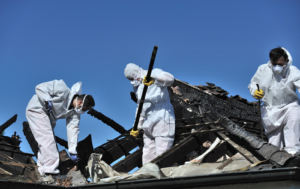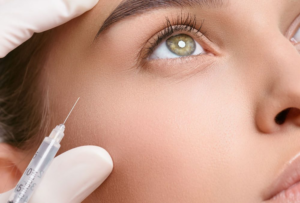Electrician Jacksonville NC are in high demand, and more vehicles, homes, and buildings rely on electricity. While most electricians are independent contractors, a few join a union.
Rith wanted to upgrade his duplex to install electric-car charging stations, but several electricians he contacted were either busy or didn’t respond. He eventually hired a different company to do the job.

Electricians need to have a variety of skills to perform their jobs safely and efficiently. While many careers require a bachelor’s degree, some trades such as electrical work can be pursued through alternative pathways that emphasize hands-on experience and practical knowledge. These pathways include vocational schools, apprenticeships, and specialized training programs. These options can provide the same educational foundation as a formal degree but are often less expensive, faster to complete, and don’t lead to accumulated student debt like traditional four-year university degrees.
Depending on their career goals, electricians may choose to specialize in specific areas of the field. Specializations can help them gain in-demand skills, increase their job opportunities, and command higher salaries. Examples of specialty fields include renewable energy systems, fire alarm systems, and smart home technology. Those who pursue specialty fields may also need to obtain additional certifications and training.
An alternative to a formal education is an apprenticeship, which allows aspiring electricians to earn while they learn. This training program combines on-the-job experience with classroom instruction from a qualified master electrician. Apprenticeships are typically available in all states and can take 4-5 years to complete.
After completing their apprenticeship, aspiring electricians can pursue a full-time position with an electrical contracting company or start their own business. In order to run a business successfully, electricians need to understand how to manage budgets and projects. A minor in business administration can be helpful for this purpose, as it teaches important aspects of the industry including financial management and entrepreneurship.
Once an electrician has gained valuable on-the-job experience, they can consider pursuing a bachelor’s degree in electrical engineering or electrical science. Getting a degree in one of these fields can enhance an electrician’s problem-solving abilities, allow them to take on leadership roles, and improve their chances of advancing within the industry. A degree can also give them the technical skills they need to keep up with new technologies and industry regulations. In addition, electricians can continue to hone their skills by attending workshops and taking continuing education courses. This can help them stay abreast of new developments and remain highly relevant in the industry.
Experience Requirements
Electricians must have extensive practical experience to perform at a high level. This can be obtained through formal training programs, which include apprenticeships, or through on-the-job experience gained in the course of work. In either case, it is essential to have keen eyesight and hand-eye coordination, physical endurance, good customer service skills, logical problem-solving abilities, and the ability to read blueprints and other technical documents.
Once you have the qualifications, a career as an electrician can be very rewarding. In addition to earning a competitive salary, you will have the opportunity to pursue your own interests and gain a variety of valuable experience. Many electricians choose to specialize, allowing them to further develop their talents and open up new avenues for employment.
A master electrician is an experienced, well-qualified professional who has passed a rigorous exam to demonstrate his or her knowledge of the National Electrical Code (NEC). This designation can be earned by completing 7.5 years of experience as a journeyman electrician, or by obtaining a bachelor’s degree and 10,500 hours of work experience as a union or non-union journeyman under the supervision of a licensed electrician.
Residential and commercial electricians install wiring, outlets, switches, and lighting fixtures in homes and buildings. They also handle electrical repairs and ensure compliance with local and state regulations. Some may also supervise other electricians or electrical contractors.
Some electricians also choose to run their own businesses, enabling them to control their schedules and the type of work they take on. They will typically liaise directly with clients, both before the job starts to establish an agreed-upon scope of work and afterwards when invoicing and securing payment.
A successful career as an electrician can offer you a long-term, financially stable, and fulfilling position. Minnesota’s thriving economy and continuing demand for skilled professionals make this an exciting time to start or expand your electrical career. Be sure to explore all your options and consider the different types of specializations available to you, so you can find the perfect fit for your skills, interests, and goals. We wish you the best of luck!
License Requirements
Depending on state regulations, most electricians must obtain a license to work in the trade. This process usually requires passing a written and practical exam. It can also involve ongoing study of the National Electrical Code and attendance at seminars or classes to update skills and learn new techniques.
The first step is to find a master electrician willing to take you on as an apprentice and help you get the hands-on experience you need to meet licensing requirements. You can also attend a trade school that offers a course of instruction on electrical theory, circuitry and mathematics. Some schools also offer apprenticeship programs that combine coursework with on-the-job training, and can be a good option for those who want to start their career right away.
An apprentice must spend about 8,000 hours working under the supervision of a licensed electrician. Some states allow classroom hours to be substituted for some of the on-the-job experience, and you may be able to count some of your schooling toward your total experience requirement. Apprenticeship programs are often a good way to meet this requirement, and many have a mentorship component that helps you navigate the field.
Once you have met your state’s experience and education requirements, you can apply to take a journeyman exam. Journeymen are able to supervise the work of their apprentices and have at least a minimum level of expertise in all types of electrical installations. Most journeymen specialize in one of five primary areas: commercial, residential, industrial and low-voltage wiring (more commonly known as voice-data-video, or VDV).
After you have a journeyman license, you can choose to remain with a company of electrical contractors or operate independently. Starting a contracting business can be more lucrative, but it takes a lot of work to market yourself and find clients. You also need to maintain a high standard of professional conduct, keep abreast of the latest electrical codes and stay on top of your finances.
Electricians must be detail-oriented and able to read blueprints, or technical diagrams, of a project site. They must understand how to install and repair lighting, power outlets, conduits, cable trays and ladder racks. They must also know how to read and interpret the instructions on specialized equipment like voltmeters, ammeters, oscilloscopes and circuit breakers.
Skills Requirements
Electricians must have a variety of skills in order to perform their duties. Some of these skills are technical, while others are more suited to the business or customer service aspects of the job. For example, an electrician must have strong observational skills to identify electrical problems. They must also have good problem-solving skills in order to find effective solutions. Finally, an electrician must be able to communicate effectively with their customers. This is true whether they work for a company or as a sole proprietor, and it is especially important when interacting with clients who are not familiar with the technical aspects of their electrical system.
Math skills are a must for any electrician, as they will often need to calculate room dimensions, circuitry, wiring, and other elements of a project. Having good math skills can help them avoid mistakes that could lead to dangerous situations or expensive repairs. Additionally, an electrician must be able to quickly read blueprints and electrical plans in order to locate outlets, panel boards, and other fixtures on a construction site.
Being a part of the fieldwork for a major renovation or new construction isn’t always an option, so it is important that an electrician has flexible hours to accommodate their client’s needs. For instance, if a client calls for an emergency visit, the electrician must be available to fulfill that request. This requires excellent communication and time-management skills in order to meet urgent requirements and deadlines.
Lastly, an electrician must be comfortable working with the latest technologies. This includes smart home technology, renewable energy systems, and energy storage solutions. Keeping up with these trends can help an electrician stay competitive in the industry and meet customer demands. In addition, it is essential for an electrician to have a strong understanding of electrical codes in order to follow best safety practices. It’s also helpful to have knowledge of a wide range of tools and equipment, including power tools, meters, and test equipment. Having good manual dexterity is important, too, as an electrician will frequently need to handle small objects and instruments.



